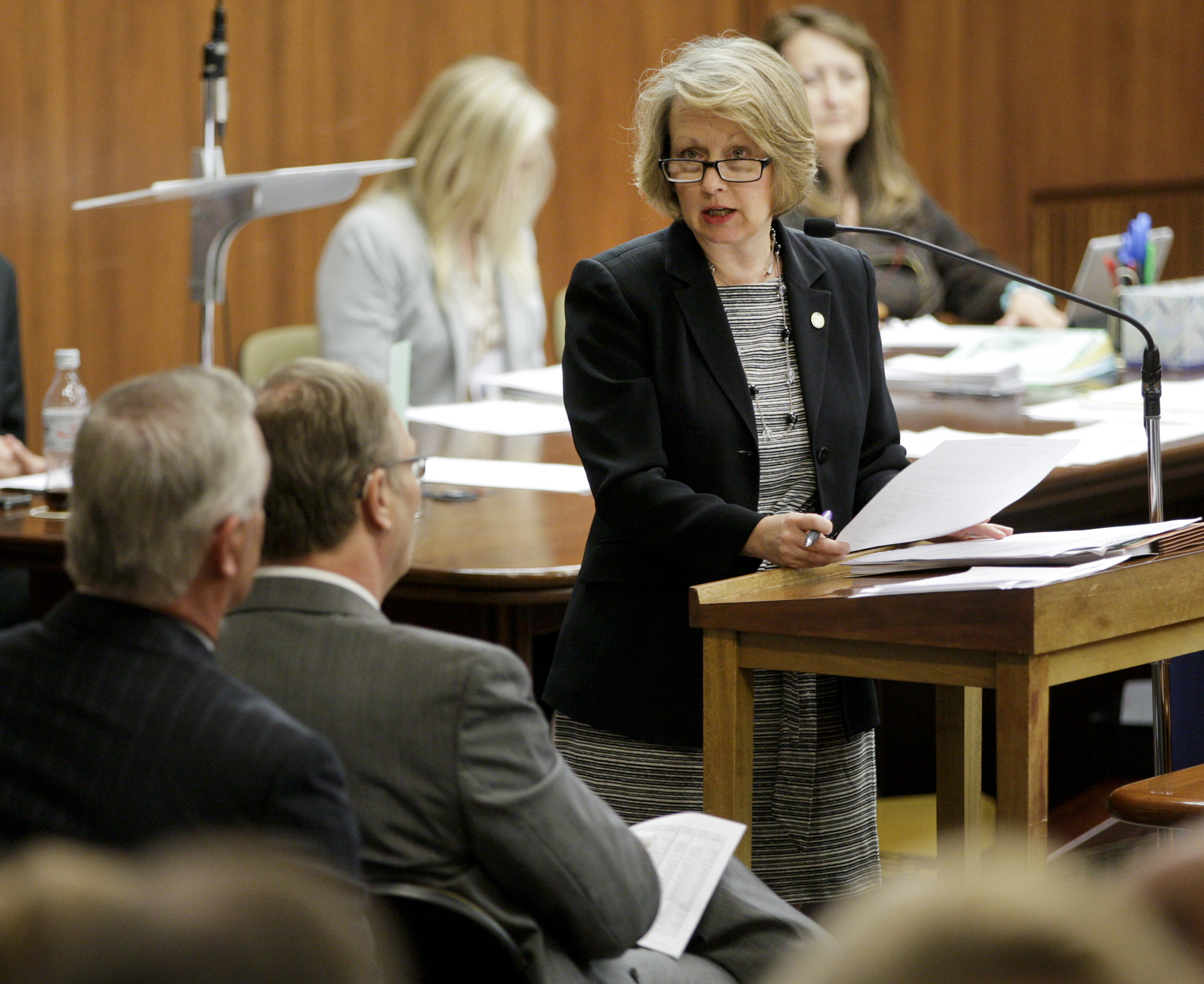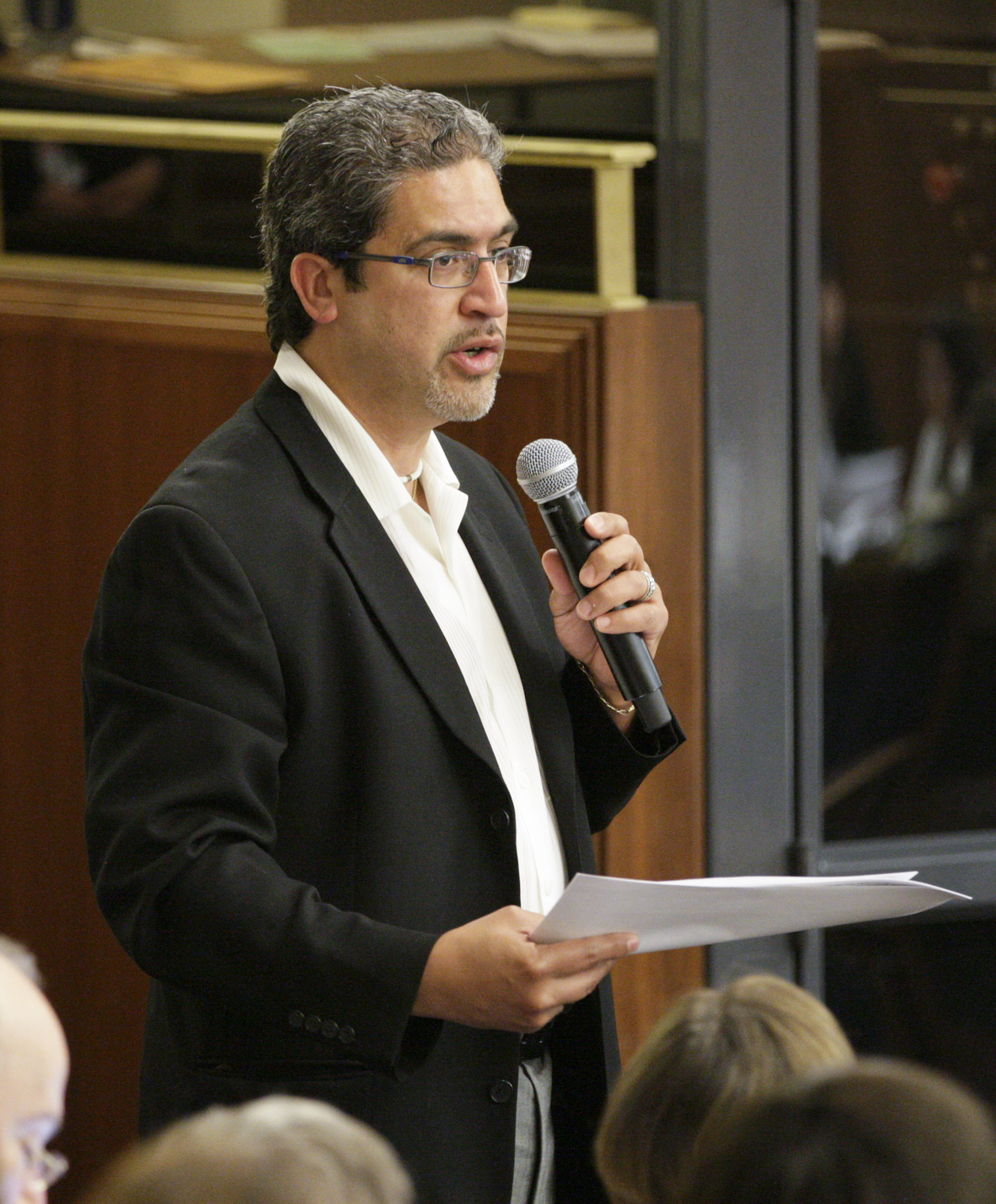K-12 education finance bill goes to governor after House, Senate approval

(NOTE: UPDATED WITH SENATE VOTE TOTAL)
Supporters hope that a bill overwhelmingly passed by the House and Senate will get a passing grade from Gov. Mark Dayton after an earlier attempt failed.
Sponsored by Rep. Jenifer Loon (R-Eden Prairie) and Sen. Chuck Wiger (DFL-Maplewood), the $17.23 billion omnibus K-12 education finance bill would, in part, increase funding for early childhood and K-12 education spending by $525 million. The bulk of that spending — $346.31 million — would increase the basic per-pupil funding by 2 percent to $5,948 in Fiscal Year 2016 and $6,067 in Fiscal Year 2017 and later.
“Every school district will benefit,” Loon said. “This is the largest increase on the formula that we’ve been able to do in a long time.”
Passed 115-10 by the House and 53-12 by the Senate during Friday’s special session, HF1 awaits gubernatorial action. If signed by the governor, the financial provisions would mostly take effect July 1, 2015. Policy provisions would have various effective dates.
Family and early childhood appropriations would be bumped by $100.5 million, under the bill. The largest base increase would be $48.25 million in early learning scholarships — a $17 million increase over what was included in the regular session education finance bill vetoed last month by the governor. It would also increase school readiness funding by $30.75 million and calls for a $10 million increase to Head Start (which received zero increase in funding under the vetoed bill).
“This will go a long way to help close the achievement gap … and those students will enter school ready to learn,” Loon said.
 Rep. Carlos Mariani speaks during debate on the omnibus K-12 education finance bill during the June 12 Special Session. Photo by Paul Battaglia
Rep. Carlos Mariani speaks during debate on the omnibus K-12 education finance bill during the June 12 Special Session. Photo by Paul BattagliaAn additional $12.5 million investment to help serve over 19,000 American Indian students and $5 million more for Bureau of Indian Education schools across the state is in the bill. It also provides $4 million in new funding for the Northside Achievement Zone and St. Paul Promise Neighborhood.
“This bill has a lot of good investment in targeted programs,” said Rep. Carlos Mariani (DFL-St. Paul). “The BIE schools are probably the most under-resourced schools in our state and will provide more opportunities for these students.”
MORE: View the spreadsheet
According to a summary by the nonpartisan House Research Department, the bill would also delay by one year to Jan. 1, 2017, “the date on which the sales tax exemption for government purchases will apply to special districts; instrumentalities of cities, counties, and townships, and all joint powers boards and organizations.”
“Why include a tax increase in this education bill?” said Rep. Mike Freiberg (DFL-Golden Valley). “This will amount to a tax increase to people who live in those cities.”
Rep. Roz Peterson (R-Lakeville) said the provision is not a tax increase, rather “it's a delay in an implementation of a tax decrease."
Some policy provisions in the bill include:
- effective with students entering eighth grade in the 2012-13 school year, students would no longer be required to take a “nationally normed college entrance exam” as a condition of graduating from high school, although they would be encouraged to do so;
- beginning with the upcoming school year and subject to district approval, agricultural science and career and technical education credits could be used to fulfill science graduation requirements; a computer science credit could fulfill a math graduation requirement; and a Project Lead the Way credit could fulfill a science or math credit;
- allowing any school district to begin the 2015-16 school year on Sept. 1, six days before Labor Day;
- allowing a school district with a four-day week plan in the current school year to continue under a that plan through the end of the 2019-20 school year;
- the Department of Education, when publicly reporting on student’s test results, would be required, effective immediately, to include data on student homelessness in demographic factors that strongly correlate with student performance, and would need to include student homelessness in school districts’ demographic profiles when organizing and reporting student performance data to state and local policy makers; and
- requiring all institutions in the Minnesota State Colleges and Universities system “to give full credit to a secondary pupil who completes for postsecondary credit a postsecondary course or program that is part or all of a goal area or a transfer curriculum at a MnSCU institution when the pupil enrolls in a MnSCU institution after leaving secondary school.”
A number of policy provisions are directed at teachers, including addressing shortages in some subject areas in parts of the state, and the Board of Teaching, including:
- the board is to adopt rules by Jan. 1, 2016, to license out-of-state teacher candidates;
- a two-year provisional license may be granted by the board to licensure candidates in a field in which they were not previously licensed or in a field in which a shortage of licensed teachers exists;
- the board “must enter into a National Association of State Directors of Teacher Education and Certification (NASDTEC) interstate agreement and other interstate agreements for teacher licensure to allow fully certified teachers from adjoining states to transfer their certification to Minnesota … after determining that the rigor of the teacher licensure or certification requirements in the adjoining state is commensurate with the rigor of Minnesota's teacher licensure requirements”;
- the board and Board of School Administrators would be directed to report on a website jointly hosted by the boards by June 1 of each year summary data on teacher and school administrator preparation and performance outcomes;
- a school board would be required to immediately discharge a continuing contract teacher whose license has been revoked for a child abuse conviction, including child sexual abuse; and
- the alternative teacher professional pay system may “include a hiring bonus or other added compensation for teachers who are identified as effective or highly effective under the local teacher professional review cycle and work in a hard-to-fill position or in a hard-to-staff school … and include incentives for teachers to obtain a master's degree or other advanced certification in their content field of licensure, pursue the training or education necessary to obtain an additional licensure in shortage areas identified by the district or charter school, or help fund a ‘grow your own’ new teacher initiative.”
Related Articles
Search Session Daily
Advanced Search OptionsPriority Dailies
Ways and Means Committee OKs proposed $512 million supplemental budget on party-line vote
By Mike Cook Meeting more needs or fiscal irresponsibility is one way to sum up the differences among the two parties on a supplemental spending package a year after a $72 billion state budg...
Meeting more needs or fiscal irresponsibility is one way to sum up the differences among the two parties on a supplemental spending package a year after a $72 billion state budg...
Minnesota’s projected budget surplus balloons to $3.7 billion, but fiscal pressure still looms
By Rob Hubbard Just as Minnesota has experienced a warmer winter than usual, so has the state’s budget outlook warmed over the past few months.
On Thursday, Minnesota Management and Budget...
Just as Minnesota has experienced a warmer winter than usual, so has the state’s budget outlook warmed over the past few months.
On Thursday, Minnesota Management and Budget...